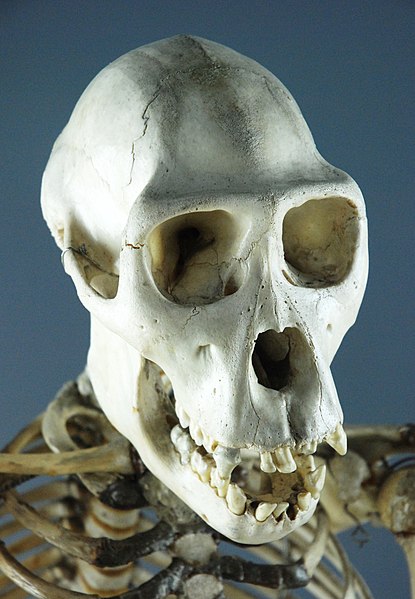Trepanning, also known as trepanation, trephination, trephining or making a burr hole, is a surgical intervention in which a hole is drilled or scraped into the human skull. The intentional perforation of the cranium exposes the dura mater to treat health problems related to intracranial diseases or release pressured blood buildup from an injury. It may also refer to any "burr" hole created through other body surfaces, including nail beds. A trephine is an instrument used for cutting out a round piece of skull bone to relieve pressure beneath a surface.
Detail from The Extraction of the Stone of Madness, a painting by Hieronymus Bosch depicting trepanation (c. 1488–1516)
The perimeter of the hole in this trepanated Neolithic skull is rounded off by ingrowth of new bony tissue, indicating that the patient survived the operation.
Skulls from the Bronze Age exhibited at the Musée archéologique de Saint-Raphaël (Archeological Museum of Saint-Raphaël), found in Comps-sur-Artuby (France). The subjects survived operations.
Dr. John Clarke trepanning a skull, c. 1664, in one of the earliest American portraits. Clarke is alleged to have been the first physician to have performed the operation in the New England Colonies.
The skull is a bone protective cavity for the brain. The skull is composed of four types of bone i.e., cranial bones, facial bones, ear ossicles and hyoid bone, however two parts are more prominent: the cranium and the mandible. In humans, these two parts are the neurocranium (braincase) and the viscerocranium that includes the mandible as its largest bone. The skull forms the anterior-most portion of the skeleton and is a product of cephalisation—housing the brain, and several sensory structures such as the eyes, ears, nose, and mouth. In humans, these sensory structures are part of the facial skeleton.
Skull in situ
Anatomy of a flat bone – the periosteum of the neurocranium is known as the pericranium
Chimpanzee skull
Fish head parts, 1889, Fauna of British India, Sir Francis Day








